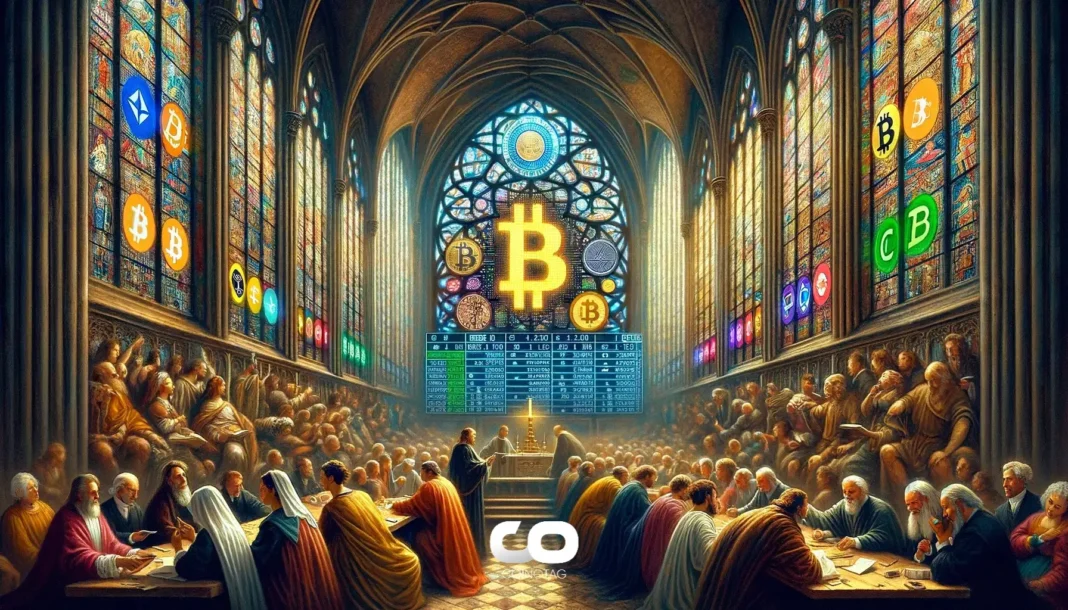-
Bitcoin and Ethereum showed modest movement amid geopolitical tensions as Iran’s Supreme Leader Ayatollah Ali Khamenei declared victory over the U.S., influencing market sentiment.
-
Despite recent volatility, Bitcoin briefly approached $108,000 before retracing, while Ethereum experienced a slight uptick, reflecting cautious investor optimism amid ongoing regional conflict.
-
James Toledano, COO of Unity Wallet, noted, “The Iran-Israel conflict is the predominant source of Bitcoin pricing movements,” highlighting the interplay between geopolitical events and crypto market dynamics.
Bitcoin and Ethereum trade cautiously as Iran claims victory over the U.S., with geopolitical tensions impacting crypto prices and ETF inflows amid market uncertainty.
Geopolitical Tensions Drive Bitcoin and Ethereum Market Movements
Bitcoin and Ethereum have experienced subtle fluctuations as geopolitical developments in the Middle East continue to shape investor behavior. Following Iran’s Supreme Leader Ayatollah Ali Khamenei’s declaration of victory over the U.S., Bitcoin momentarily rallied toward the $108,000 mark, a level not seen since mid-June, before settling slightly lower at $107,139. Ethereum also gained modestly, climbing 0.2% to $2,439. These movements underscore the sensitivity of major cryptocurrencies to international conflicts, with both assets down 2.2% and 6.7% respectively over the past 30 days.
Market Analysis: The Impact of Iran-Israel Conflict on Crypto Prices
According to James Toledano, Chief Operating Officer at Unity Wallet, the ongoing Iran-Israel conflict is a significant factor influencing Bitcoin’s price volatility. He explains that the recent recovery is linked to broader macroeconomic trends, including a weakening U.S. dollar, declining oil prices, and renewed expectations for Federal Reserve rate cuts. Additionally, sustained inflows into Bitcoin ETFs have provided technical support, particularly around the $100,000 to $103,000 price range. These combined factors suggest that geopolitical risks are intricately connected with traditional market drivers in shaping crypto valuations.
ETF Inflows Signal Renewed Investor Confidence Amid Conflict
Despite the heightened geopolitical risks, U.S.-based Bitcoin and Ethereum ETFs have seen a resurgence in inflows. After a sharp decline to $6.4 million on June 20, Bitcoin ETFs attracted $547.7 million in inflows by June 25, signaling renewed investor interest. Ethereum ETFs similarly rebounded from $11.3 million in outflows to $60.4 million in inflows within the same period. This trend reflects a cautious but growing confidence in crypto assets as a hedge or alternative investment during periods of geopolitical uncertainty.
Ceasefire and Market Sentiment: A Temporary Calm?
The recent ceasefire announcement between Iran and the United States, brokered by President Trump, has helped ease immediate fears of a large-scale conflict. While sporadic missile exchanges occurred post-ceasefire, market participants appear cautiously optimistic, with 93% of Myriad Markets users expecting the ceasefire to hold at least through the end of the week. This sentiment is crucial in stabilizing crypto markets, which had seen $701 million in liquidations during the height of the conflict.
Long-Term Outlook: Political Stability and Crypto Market Resilience
Looking ahead, 77% of Myriad Markets users predict that Ayatollah Khamenei will remain in power through September, reflecting expectations of political continuity in Iran despite ongoing tensions. Khamenei’s assertion of Iran’s military capabilities, including strikes on key U.S. bases, reinforces the complex geopolitical landscape that investors must navigate. The crypto market’s resilience amid these challenges highlights its evolving role as both a speculative asset and a potential safe haven during geopolitical crises.
Conclusion
Bitcoin and Ethereum’s recent price dynamics illustrate the profound influence of geopolitical events on cryptocurrency markets. While short-term volatility remains elevated due to the Iran-U.S. conflict, renewed ETF inflows and a tentative ceasefire have contributed to cautious optimism among investors. Maintaining awareness of geopolitical developments and macroeconomic indicators will be essential for market participants seeking to navigate this complex environment effectively.







